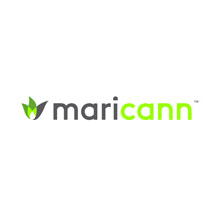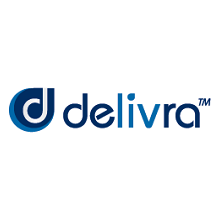A True or False Quiz to get things started …
- Any Investor Can Identify Arbitrage
- Any Investor Can Benefit/Gain from Arbitrage
- Arbitrage Tracking is difficult
- Opportunities exist for mere seconds only
- TheDeepDive & CannaInvestor Magazine assist in identifying these opportunities
When TheDeepDive and I discussed a collaboration I was absolutely thrilled. TheDeepDive, like CannaInvestor Magaizne, often goes where the paid stock promoters would not dare – discussing the risks and concerns that may affect your investment decisions. Some of their dives were on companies that CannaInvestor Magazine had also referenced as appearing almost too good to be true from a valuation perspective – companies such as Delivra Corp and Canada House Wellness Group.
These are companies that, at least at that time, had not cut cheques to paid promoters and were therefore pretty much off of the radars of many. TheDeepDive accepted the challenge of a mini dive on Quadron Cannatech Corporation and that dive appears in this month’s issue of CannaInvestor Magazine (Canada) and I accepted an invitation to discuss Arbitrage. In typical CannaInvestor fashion, I expanded the scope of the undertaking to demonstrate real examples that any investor can take advantage of and I also created a simple tool for this exercise that is available for you to download.
An Education in Arbitrage
By Louis Kyron, CPA,CGA – Editor in Chief of CANNAINVESTOR MAGAZINE (Canada)
According to Investopedia:
“Arbitrage is the simultaneous purchase and sale of an asset to profit from a difference in the price. It is a trade that profits by exploiting the price differences of identical or similar financial instruments on different markets or in different forms. Arbitrage exists as a result of market inefficiencies and would therefore not exist if all markets were perfectly efficient.”
I am going to give a real example of this that afforded investors a risk free instant gain in the 10% to 18% range.
Most individual investors believe that such opportunities are too difficult to identify and that they just do not have the time to be continuously tracking the same security on different exchanges. What if there was a zero cost and near zero effort to do so? The answer is so simple that it is hiding in plain sight – Google Docs.
Utilizing Google Docs
Simply open a new spreadsheet and this is the formula needed to import the share price automatically (there is a time delay of a few minutes):
GoogleFinance(stock,”price”)
“Stock” in the formula is in the format of Exchange:Symbol. For example, for CIBC the formula would simply be: GoogleFinance(TSE:CM,”price”)
You will note that Google Finance uses older stock exchange prefixes such as TSE, CVE, and CNSX.
You of course can create a column of companies in the same form of the “stock” shown above (CIBC) and a column that pulls in the prices. If for example, your column “A” had the stock list then your formula in column B (using B1 in this example) would be: GoogleFinance(A1,”price”) and in this case cell A1 would be TSE:CM.
And here is where you can use Google Finance to track the stock prices on two different exchanges. Let’s use Air Canada – trades in Canada under the symbol “AC” and in the USA under “ACDVF”. At time of writing, I have entered the following formula in cells A1 and B1.
A1 = GoogleFinance(TSE:AC,”price”) & B1 = GoogleFinance(ACDVF,”price”)
The share prices were CAD$28.11 and USD$21.51 respectively. The t exchange rate was 0.7653. Therefore, USD$21.51 / 0.7653 = $28.11. You can see that the share price on the TSX and the share price (converted to Canadian dollars) on the USA index are both equal at CAD$28.11. There is no arbitrage opportunity and that is exactly what should happen.
Now let’s look at what happened on November 27, 2017 with respect to the share prices of Lexaria Biosciences Corp ($LXX.c; OTC:$LXRP).

The columns are self-explanatory but let’s walk through the top row together.
On November 27th, at 9:30am, the share price of LXX on the CSE was CAD$0.95 and the next column is the USD equivalent. So for example, if you wanted to buy LXX on the CSE but with USD it would have cost about $0.75 per share in USD.
The next two columns represent the share price at 9:30am on the OTC under the LXRP symbol. The columns are a mirror image of the LXX ones because USD is the base currency of LXRP and therefore the actual USD price is listed first. The second column is what the CAD cost would be and by only by chance did it calculate to exactly to $1.
Before we continue along our journey from left to right let’s stop right here. Intuitively, if the share price in CAD was $0.95 on the CSE and CAD$1.00 on the OTC we would expect to see an arbitrage opportunity to buy on the CSE and likely just over 5%. $1.00 less $0.95 is $0.05 and $0.05/$0.95 = 5.2% and sure enough that is the value in the rightmost cell under “Arbitrage Gain”.

Now let’s move to the third row because this is closer to what the “norm” should be as per our Air Canada example. The 0.4% gain at that exact moment in time (snapshot) is easily er
oded by transaction costs and the fact that one cannot buy and sell USD at the exact same conversion rate because financial institutions have their own fee built into their conversion rates and that fee is not the same for buying and for selling. Have you ever received the official exchange rate on a currency conversion?
You can see what something happens at 12:12pm … the arbitrage is 8.3% after being frozen at 7.2% since 10:45am. Starting at 2:34pm, look at the trend through to the end of the day.
Smaller transactions may not have been able to realize much of a gain at an arbitrage of 7.2% or lower depending on transactions fees and currency conversion rates and related fees but from 2:34pm through 4:00pm the opportunity was real and it was material. Imagine making over 15% ROI risk free instantaneously. Many did that day and I personally know one such investor who thought that something had to be wrong as, in his own words, it was a license to print money and as another investor remarked to me – “I thought I stepped inside one of those wind machines with money flying all over and I had to grab as much as I could before the machine turned off”.
Google Docs simplified
If you are thinking that creating the spreadsheet I described above is too much effort and you are not comfortable with the commands, I assure you that you could have done so already in about the time it took to read to this point. In fact, here are the commands you need and just copy and past them into the cells in GOOGLE DOCS (sheet).
CELL A2: EXCHANGE:SYMBOL. For example, CVE:JET
CELL B2: USA ticker – SYMBOL. For example, JETMF
CELL C2: is optional but for the company name: =GOOGLEFINANCE(A2,”name”)
CELL D2: share price on TSXV in CAD: =GOOGLEFINANCE(A2,”price”)
CELL E2: share price in the US in USD: =GOOGLEFINANCE(B2,”price”)
CELL P2: Now off to the right somewhere enter this formula into a cell and you will see why I say “off to the right somewhere” … let’s choose CELL P2: =TODAY()
CELL Q2: =query(GoogleFinance(“CURRENCY:”&”USD”&”CAD”,”CLOSE”,$P$2))
CELL S2: =query(GoogleFinance(“CURRENCY:”&”CAD”&”USD”,”CLOSE”,$P$2))
CELL F2: back to our main grid enter: =$R$2
CELL G2: enter: =$T$2
CELL H2: ENTER: =D2*G2
CELL I2: ENTR: =E2/G2
Now at this point, you should do some personal preference formatting such as titles (row 1) and reducing the number of decimals and even the column widths.
I will copy and paste my output below:

You can add your own columns to the right that show the arbitrage as a change in share prices or as a percentage but you can see from this example that the arbitrage is exactly what would it should be and that is zero ($0.79 – $0.79 and $0.60 – $0.60). I used Canadian Jetlines Ltd as it was a recent TheDeepDive undertaking.
Still too much effort? Not to worry you can download the base template from this link and you notice I added in some goodies for you including cell L1 that alerts you to the number of opportunities that exist. Notice the extra sheets including an all in one analysis sheet and a currency conversion sheet that includes the Euro and the Australian dollar. Although I created that for you, there is something organic and educational when you do it yourself one formula at a time.
Also note the area N6 to O7 as this allows you enter in the minimum spread before you consider it as an opportunity. I set it to $0.10 meaning any arbitrage less than $0.10 per share will be ignored but you can set the two values (column O) to any value but note due to rounding and currency rates (6 or more decimal places), I would not set it less than $0.02 unless you round previous cell’s calculations accordingly.
Other than Canopy Growth, the other companies are just a few that thedeepdive.ca has reviewed in the past. There are no hints in that list to suggest any bullish or bearish sentiment on my part. Typically, any arbitrage value plus or minus a penny or two is typically due to rounding and in any event the odds are your costs associated with the undertaking will result in zero gains or even a loss when the spread is so razor thin. An arbitrage exists for our purposes for any positive or negative value. You are encouraged to save a copy of that spreadsheet to your drive and make it your own. You can round values to two decimals throughout if you like or add IF STATEMENTS etc.
The biggest critique I have ever heard from this specific method is that the share prices are a few minutes delayed between real time and the value on the google sheet … look at Lexaria above again … did a few minutes really matter?
Just by adding 10 to 20 companies a day and copying the formula cells down (less than seconds total time per symbol) in just months you could have thousands of companies that you are tracking in near real time. You can add an IF formula at the top that states IF there are any arbitrages greater or less than 8% (of whatever value) then display the word “YES” .. and all you need to do is monitor that one cell. Be mindful of tax consequences because, for example, OTC shares cannot be held inside Canadian tax deferred/free accounts and some accounts (such as RESP, TFSA) may still attract USA tax consideration (such as on dividends) as per this article. Now let’s look at an easy deviation of the arbitrage opportunity and that is for M&A activity.
The near arbitrage
Typically, an M&A announcement involves the Acquiring company “(Acquirer”) offering a premium for the target company (“Acquiree”). Even in friendly mergers, one company’s shares are typically being bought (usually in cash or in shares or a combination of both) at a stated rate above the current market rate. When Canopy Growth and Mettrum merged, CANNAINVESTOR Magazine, to my knowledge, was the only official premier online digital publication to clearly explain and demonstrate the gain that existed so long as the deal went through. This is why M&A scenarios are not true arbitrage because they fail the risk free and instantaneous criteria. Let’s quickly look at two current ones:
Aurora Cannabis Inc (ACB) with CannImed Therapeutics Inc (CMED)
AND
Aphria Inc (APH) with Nuuvera Inc (NU)
In the end, ACB and CMED was a friendly merger where CMED shareholders had three options. One was to accept 3.4 shares of ACB for every one share of CMED held and the other two options were a cash offer per CMED share and combination of cash and shares. For our purposes, let’s look at the share offer only. Intuitively, so long as the spread was less than 3.4 and the deal went through there existed an opportunity to buy CMED shares and end up with a greater number of ACB shares than had you used that same cash to buy ACB shares instead. For example, if ACB was $10 and CMED was $40 you could buy four ACB shares for $40 or you could buy one CMED share for $40 and that one CMED share would convert back into 3.4 shares of ACB and since fractional shares are lost you would have only 3 ACB shares. However, if CMED was trading say at $25 you could buy 2.5 shares of Aurora (so 2 shares and keep $5 cash) for $25 or 1 share of CMED for $25. That 1 share of CMED would convert back again to 3 shares of ACB. We could use $250 instead of $25 and this would be 25 shares of ACB or 10 shares of CMED. CMED shares would convert back to 34 shares of ACB. A gain of 9 shares of ACB for the same cost. Did this opportunity actually exist?
You can use the arbitrage spreadsheet from the link provided and remove the currency columns. One column cold be share price of ACB, and the next one share price of CMED, and another the number the spread (CMED Share Price divided by ACB Share Price).
We are going to assume all shares are held with a tax deferred to tax free account (RRSP, RDSP, RESP, TFSA, etc).
On the tables that follow, shaded cells in green represent that yes indeed the opportunity not only existed but for a sustained period of time – so does a few minutes delays in the stock prices on the spreadsheet really matter that much?

From February 1st through February 27th and again briefly on March 1st, one could buy CMED shares rather than ACB and benefit with a greater number of ACB shares when the transaction closed than if they had bought ACB shares.
When it is new cash being injected there are risks because we do not now how the shares of either will do. For example, on February 6th there was no way to know what the share prices of either would be on February 15th. The case here is for the person that wanted to invest in ACB for the long haul and was uncertain whether to invest that money in shares of ACB or in shares of CMED at that time (in this case, on February 6th).
For existing shareholders of ACB who were committed to holding ACB past the transaction date, this was truly as close to “near-arbitrage” as possible because it was now a friendly merger with the Boards of ACB and CMED each in favour of the transaction. On February 1st, 1000 shares of ACB could have been sold and the proceeds use to buy shares of CMED and when the transaction closed on March 15, the investor would have 1158 shares of ACB. From 1000 shares to 1158 shares with the only cost being the broker fees to sell and buy. In fact, you will see every day from Feb 1 to Feb 28 afforded this. The CMED/ACB column is also an indicator because only when that ratio was greater than 3.40 (the conversion ratio of CMED to ACB) was selling ACB share to buy shares of CMED not in the investor’s best interest.
What about the APH-NUU planned M&A?

To be consistent we will consider an investor that wanted to purchase 1000 shares of APH. The four columns on the right represent the $0.60 received for every share of NUU held when the deal officially closes. As with the ACB-CMED M&A, the Boards of APH and NUU are both recommending this merger. The highlighted green cells represent the number of APH shares would be received when the transaction closed if an investor chose to buy shares of NUU instead of buying 1000 shares of APH but only when it resulted in more than 1000 shares of APH on the conversion. The NUU/APH column is our indicator and so long as that value is less than the conversion rate of 0.3546 (each tendered share of NUU will received 0.3546 shares of APH), we should end up with more than 1000 shares of APH. As you can see, not only were there multiples times this was true but the investor would also receive $0.60 cash for every share of NUU held.
Looking at February 26th time slot 3, an investor looking to buy 1000 shares of APH could have instead bought NUU with that same money and on closing would receive 1098 shares of APH (98 shares more than had they bought 1000 shares of APH outright) plus $1,858.80 in cash. Let’s assume the total transaction costs paid were a bit steep at $18.80 leaving a net cash benefit of $1,840.00. Now let’s assume a strong bullish trend for APH shares and the share price is $18.30 when the investor receives the cash for the NUU shares. The investor could purchase another 100 shares of APH with the NUU cash proceeds for $1,830.00 (the $10 difference is essentially the broker fee on the buy). 1000 shares of APH would now be 1,198 shares of APH in this example where we also assumed a bullish trend on the share price. A bearish or neutral trend on the APH share price translates into a greater number of APH shares that could be purchased.
Existing shareholders of APH (like ACB) who intended to hold their shares post M&A had as true of an arbitrage as one could wish for because they did not have to invest new cash. In other words, using that same February 26th example for APH-NUU, for only the cost to sell APH and buy NUU, the investor picked up 98 additional shares plus $1,858.80 in cash.
The cash component adds a new dynamic because in theory one could opt for NUU shares (new money or buy selling APH) knowing they would receive back less APH shares than they started with but could make up the difference with the cash component PLUS have cash left over. That is a gamble of course because we do not the price of APH on closing.
Remember our opening assumption – all shares are held within a tax deferred or tax free account. Shares held in an investment account would attract capital gains and as such the tax consequences would need to be considered.
The Close
Risk free opportunities and near risk free opportunities present themselves frequently and are fully available to any individual investor. Simple tools such as the google docs sheet can alert you in near real time as well.
You may recall I opened this article discussing how some of TheDeepDive’s other articles were on companies that were off the radar and that is perhaps, at least in part, owing to these companies not cutting cheques to paid promoters – at least at that time. It is for similar reasons why you do not see the American paid promoters not discussing these M&A near-arbitrage opportunities. Could you imagine a paid stock promoter hired by the Acquirer company encouraging followers to sell their shares of the Acquirer Company and use the proceeds to purchase shares of the Acquiree? And that is why even if you follow these paid promoters you also need TheDeepDive and CannaInvestor Magazine.
I want to once again thank Jay and TheDeepDive for our collaboration and their dive on Quadron Cannatech Corporation (CSE:QCC) appearing in our March issue and remember that subscribing is absolutely free – www.cannainvestormag.ca and to end where I began the answer to the True False questions – True, True, False, False, True.
Feel free to follow me on twitter at @LouisKyron and until we meet again, invest long and prosper.
NOTE: Subsequent to my writing this, the M&A between APH and NUU was approved and expected to close on or about March 23rd – exactly as expected and proving the near Arbitrage of M&A opportunities (News Release on Merger).
Louis Kyron, CPA,CGA
The article is for educational and discussion purposes only. Its intent is to bring an awareness of the subject matter only. Third parties are solely responsible for their own content. This article in no way is deemed investment or tax advice of any kind. The companies referenced were done so because they suit the subject matter OR are companies that TheDeepDive had already done dives on and therefore we used for familiarity purposes of TheDeepDive audience. Readers and users of any content are solely responsible for their own due diligence and are solely responsible for their own decisions and actions.









